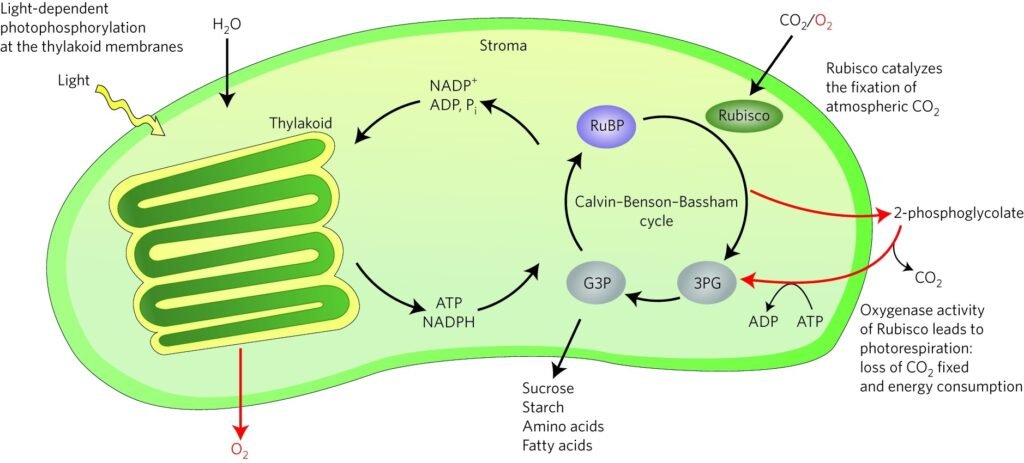The molecular counterpart of a good friend with a bad habit is RuBP oxygenase-carboxylase, also known as rubisco, an essential enzyme in photosynthesis. During the first step of the Calvin cycle, rubisco adds carbon dioxide (CO2) to an organic molecule as part of the carbon fixation process. Because rubisco is so essential to plants, it accounts for at least 30% of the soluble protein in a normal plant leaf. However, rubisco also has a significant drawback: it occasionally picks up (O2) as a substrate rather than (CO2) as a substrate.
This side reaction starts a process known as photorespiration, which actually causes the loss of carbon that has already been fixed rather than fixing it.
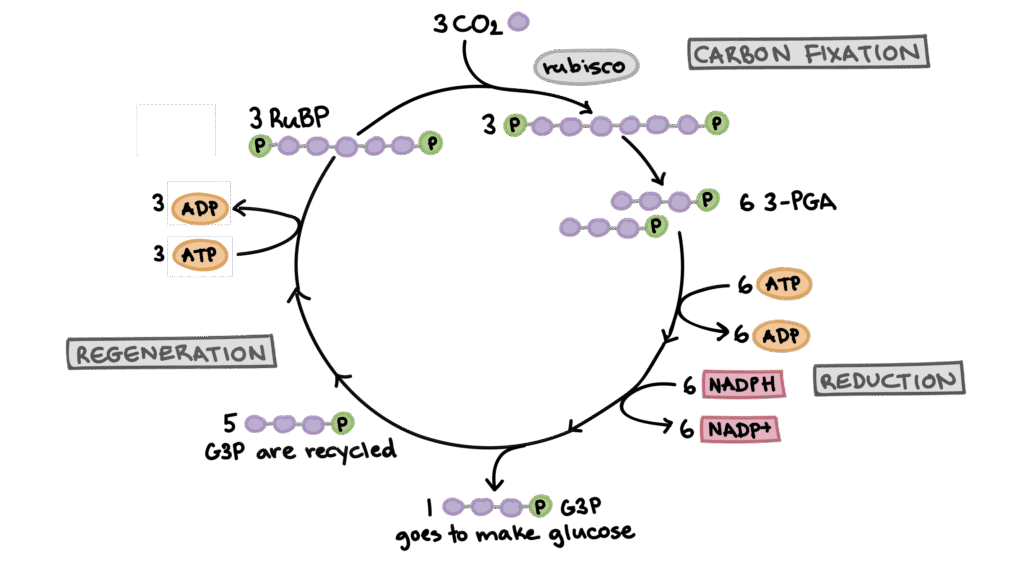
Rubisco binds to either (CO2) or (O2)
As we saw in the introduction, the enzyme rubisco can use either (CO2) or (O2) as a substrate. Rubisco adds whichever molecule it binds to a five-carbon compound called ribulose-1, 5-bisphosphate (RuBP). The reaction that uses (CO2) is the first step of the Calvin cycle and leads to the production of sugar. The reaction that uses (O2) is the first step of the photorespiration pathway, which wastes energy and “undoes” the work of the Calvin cycle2.

What controls the frequency of “chosen” substrates? The temperature and the proportional concentrations of (O2) and (CO2) are two important variables.
Photorespiration is reduced when a plant possesses stomata, or leaf holes, which allow open (CO2) to diffuse in and (O2) and water vapor to diffuse out. However, (O2) from photosynthesis accumulates inside the leaf when a plant closes its stomata, for example, to lessen water loss through evaporation. In these circumstances, the increased ratio of (O2) to (CO2) results in an increase in photorespiration.
Furthermore, as temperatures rise, Rubisco’s affinity for (O2) increases. Rubisco has a about [80] times greater affinity for (tendency to bind to) (CO2) at mild temperatures than it does for (O2).
The bottom line is that hot, dry conditions tend to cause more photorespiration—unless plants have special features to minimize the problem. You can learn more about plant “workarounds” in the videos on C4 plants and CAM plants.
Photorespiration wastes energy and steals carbon
Photorespiration begins in the chloroplast, when rubisco attaches (O2) to RuBP in its oxygenase reaction. Two molecules are produced: a three-carbon compound, 3-PGA, and a two-carbon compound, phosphoglycolate. 3-PGA is a normal intermediate of the Calvin cycle, but phosphoglycolate cannot enter the cycle, so its two carbons are removed, or “stolen,” from the cycle5.
To recover some of the lost carbon, plants put phosphoglycolate through a series of reactions that involve transport between various organelles. Three-fourths of the carbon that enters this pathway as phosphoglycolate is recovered, while one-fourth is lost as (CO2)5 .
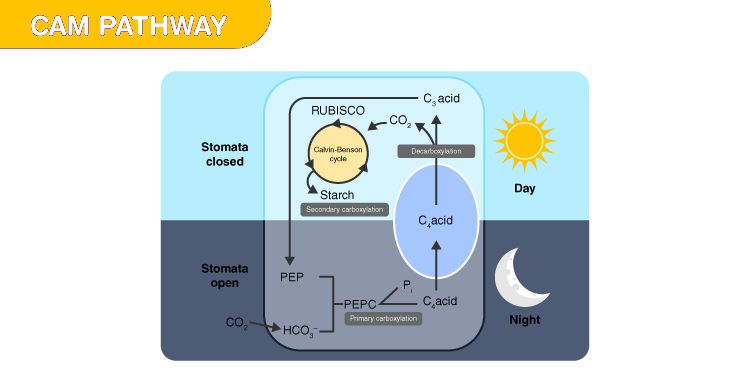
In the diagram below, you can see a comparison between photorespiration and the normal Calvin cycle, showing how many fixed carbons are gained or lost when either 6 (CO2) or 6 (O2) molecules are captured by rubisco. Photorespiration results in a loss of 3 fixed carbon atoms under these conditions, while the Calvin cycle results in a gain of 6 fixed carbon atoms.
Evolution of C4Photosynthesis
C4 photosynthesis is one of the most convergent evolutionary phenomena in the biological world, with at least 66 independent origins. Evidence from these lineages consistently indicates that the C4 pathway is the end result of a series of evolutionary modifications to recover photo respired CO2 in environments where RuBp is CO oxygenation is high. Phylogenetically informed research indicates that the repositioning of mitochondria in the bundle sheath is one of the earliest steps in C4 evolution, as it may establish a single-celled mechanism to scavenge photo respired CO2 produced in the bundle sheath cells. Elaboration of this mechanism leads to the two-celled photo respiratory concentration mechanism known as C2 photosynthesis (commonly observed in C3 – C4 intermediate species) and then to C4 photosynthesis following the up regulation of a C4 metabolic cycle.
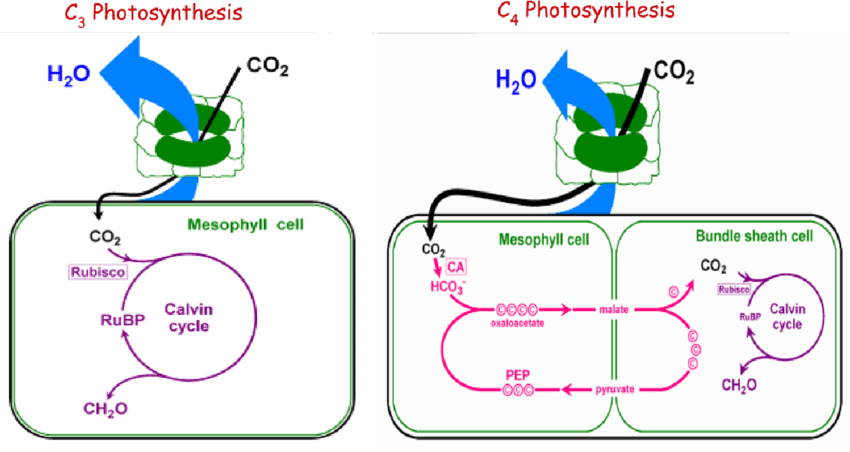
Establishment of a New Photo respiratory Bypass in Rice Chloroplasts
We attempted to establish a new photo respiratory bypass that converts glycolate to CO2 via three rice-self-originating enzymes. In this bypass glycolate is first oxidized to oxalate in two steps by OsGLO3, an isoform of glycolate oxidase in rice that was shown to effectively catalyze the oxidation of both glycolate and glyoxylate . The oxalate produced is then completely oxidized into CO2 and H2O2 by OsOXO3, an isoform of oxalate oxidase in rice that has a stable optimum pH ranging from 6.0 to 8.0. H2O2 produced by the three reactions is scavenged by OsCATC, an isoform of catalase in rice leaves . We named this bypass the GOC bypass after the three enzymes (glycolate oxidase, oxalate oxidase, catalase) used.
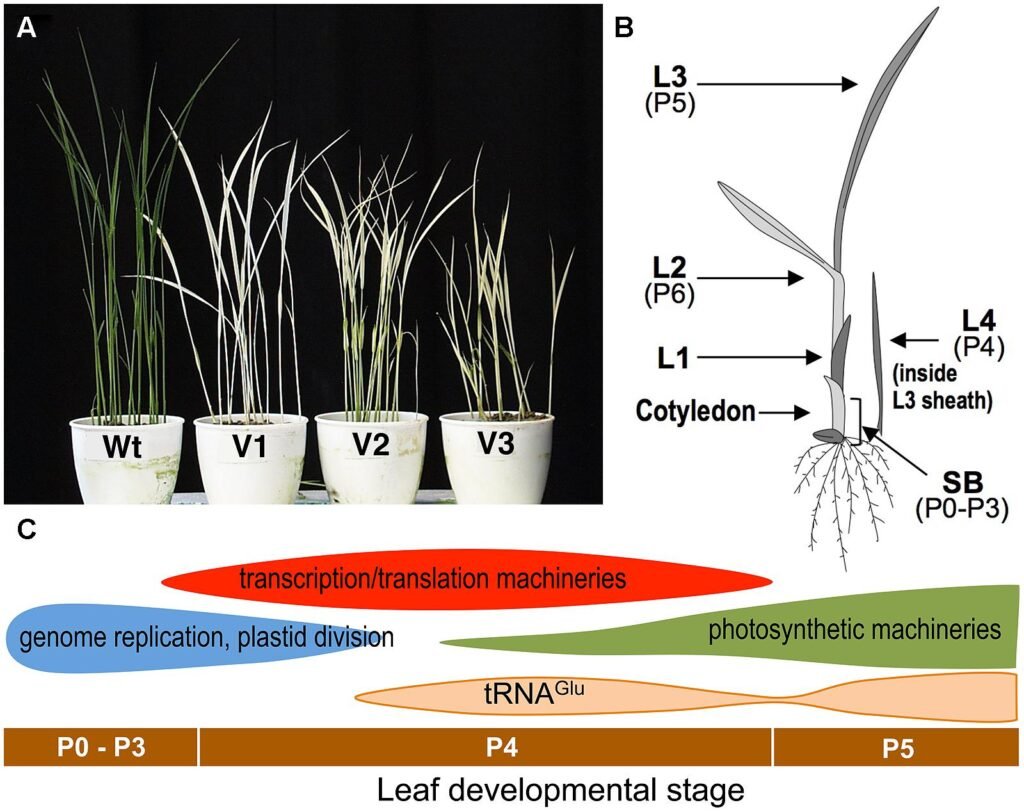
RUBISCO is the enzyme responsible for the great majority of net CO2 fixation from the atmosphere today, although it evolved early in biotic development approximately 3 billion years ago, most likely from enzymes involved in sulfur metabolism. The only source of molecular oxygen in the atmosphere throughout the RUBISCO development was most likely photolysis of water by UV radiation, and concentrations were 10–14 times lower than they are today. Meanwhile, CO2 levels were at least 100 times more than they are now. Because there was no evolutionary pressure, the first RUBISCO enzymes were most likely quite poor at differentiating between CO2 and O2.
